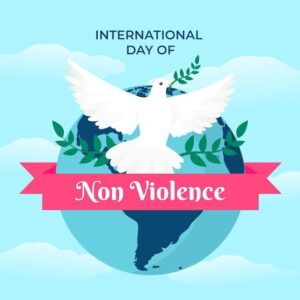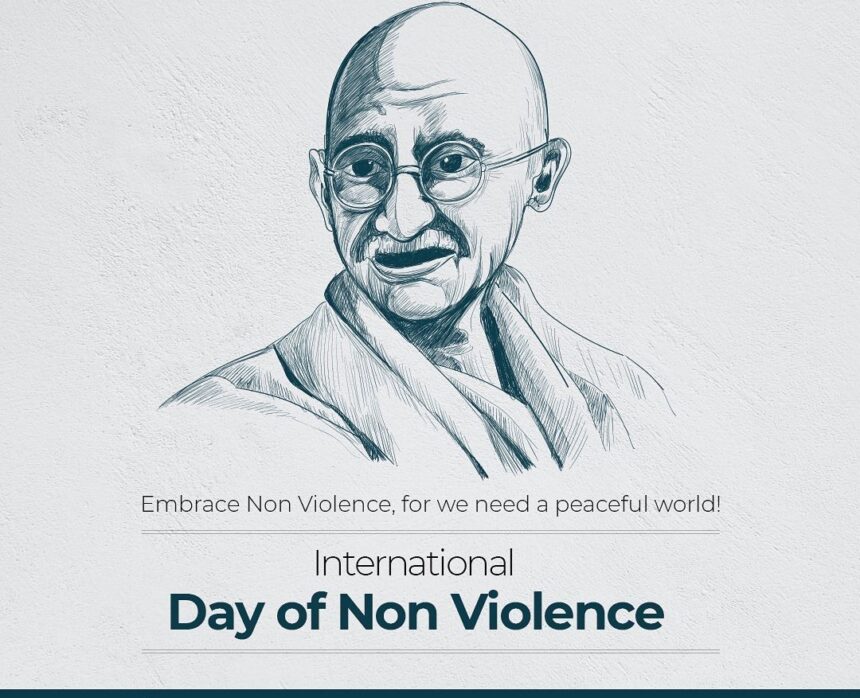🕊️ 7 Inspiring Truths Behind the International Day of Non-Violence That Can Change Lives
🌍 Introduction: A Gentle Revolution That Still Roars
In a world where conflict, aggression, and power struggles dominate headlines, one philosophy stands tall and timeless: Non-Violence. This isn’t just an ideal; it’s a transformative force, a way of life, and a path to peace followed by great leaders like Mahatma Gandhi, Martin Luther King Jr., and Nelson Mandela.
- 🕊️ 7 Inspiring Truths Behind the International Day of Non-Violence That Can Change Lives
- 📜 History of International Day of Non-Violence
- 📆 Timeline at a Glance
- 📌 7 Inspiring Facts That Redefine Non-Violence
- 1. ✋ Non-Violence Is Active, Not Passive
- 2. 🌍 Followed by Global Movements
- 3. 🎓 Taught in Schools and Universities
- 4. 🧘 Promotes Mental Peace and Health
- 5. 🕯️ UN Celebrates It with Powerful Messages
- 6. 🌱 Ahimsa Means Sustainability
- 7. 💖 It Begins at Home
- 🎯 Why October 2nd Matters Globally
- 📖 FAQs About International Day of Non-Violence
- Q1. Why is October 2 celebrated as the International Day of Non-Violence?
- Q2. Who started this day?
- Q3. What does this day aim to achieve?
- Q4. How can schools participate?
- Q5. Is non-violence still relevant today?
- 🕊️ How Is It Observed?
- 🌼 Wishing Messages for International Day of Non-Violence
- 🌿 Importance in Our Lives
- 💡 Daily Life Impacts
- 🔚 Conclusion: A Simple Act of Courage
To honour this noble philosophy and the birthday of Mahatma Gandhi, the apostle of peace, the United Nations declared October 2 as the International Day of Non-Violence.
It is a day not only to remember Gandhi’s legacy but to actively promote non-violence through education, awareness, and compassionate action.
📜 History of International Day of Non-Violence
The idea for a global day dedicated to non-violence was proposed by India.
On 15 June 2007, the United Nations General Assembly passed resolution A/RES/61/271, officially declaring October 2nd, the birth anniversary of Mahatma Gandhi, as the International Day of Non-Violence.
The day affirms the “universal relevance of the principle of non-violence” and seeks to promote a culture of peace, tolerance, and understanding.

📆 Timeline at a Glance
| Year | Event |
|---|---|
| 1869 | Birth of Mohandas Karamchand Gandhi in Porbandar, India |
| 1947 | Gandhi leads India to independence through non-violent resistance |
| 1969 | Gandhi’s 100th birth anniversary celebrated worldwide |
| 2007 | UN declares October 2 as International Day of Non-Violence |
| 2024 | Focus theme: “Nurturing Peace Through Non-Violent Leadership” |
📌 7 Inspiring Facts That Redefine Non-Violence
1. ✋ Non-Violence Is Active, Not Passive
Contrary to popular belief, non-violence isn’t weakness. It’s not inaction. It’s choosing peace in the face of provocation. Gandhi said, “Non-violence is the greatest force at the disposal of mankind.”
2. 🌍 Followed by Global Movements
From India’s independence to the American Civil Rights Movement, non-violence has toppled empires and challenged injustice—not with weapons, but with truth and love.
3. 🎓 Taught in Schools and Universities
Many global institutions teach “Ahimsa” (non-harming) as part of peace studies, yoga philosophy, and leadership programs. Even corporate cultures are now embracing non-violent communication (NVC) for conflict resolution.
4. 🧘 Promotes Mental Peace and Health
Non-violence extends beyond physical acts. It’s also about not harboring hatred, jealousy, or resentment. Living with compassion and forgiveness reduces stress and increases emotional well-being.
5. 🕯️ UN Celebrates It with Powerful Messages
Every year, the United Nations headquarters and peace missions worldwide host dialogues, films, public talks, and school activities that echo the message of peace.
6. 🌱 Ahimsa Means Sustainability
Non-violence applies to how we treat nature too. Sustainable living, vegetarianism, and animal rights are all rooted in the broader philosophy of not causing harm.
7. 💖 It Begins at Home
You don’t need to lead a movement to practice non-violence. It starts in how you talk to your family, resolve conflicts at work, or handle criticism. Kindness is a radical act in today’s fast-paced world.
🎯 Why October 2nd Matters Globally
Gandhi once said:
“You may never know what results come of your actions. But if you do nothing, there will be no result.”
This day is an invitation to act. Not to fight, but to heal. Not to hurt, but to build bridges. In today’s divisive environment, the message of non-violence is more urgent and essential than ever.
📖 FAQs About International Day of Non-Violence
Q1. Why is October 2 celebrated as the International Day of Non-Violence?
Because it’s the birth anniversary of Mahatma Gandhi, who pioneered non-violent resistance and inspired global change.
Q2. Who started this day?
The United Nations, upon India’s proposal, in 2007.
Q3. What does this day aim to achieve?
To promote peace, tolerance, understanding, and education on non-violence as a tool for change.
Q4. How can schools participate?
Through debates, skits, essays, peace marches, and storytelling based on Gandhi’s life and message.
Q5. Is non-violence still relevant today?
More than ever! In a time of political polarization, online hate, and wars, non-violence is the only sustainable path to peace.
🕊️ How Is It Observed?
📚 Schools and Universities: Special assemblies, Gandhian quotes, cleanliness drives, and speeches
🧘 NGOs and Activists: Workshops on conflict resolution, social justice, and non-violent communication
🕊️ UN and International Bodies: Exhibitions, films, and seminars on peace and human rights
🏡 Personal Level: Practicing forgiveness, kindness, and mindful speech for one day (and hopefully beyond)
🌼 Wishing Messages for International Day of Non-Violence
🕊️ “Be the change. Be the peace. Happy International Day of Non-Violence!”
🧘 “May your words heal, not hurt. Celebrate non-violence every day.”
✨ “On this special day, let’s spread love louder than hate.”
🌍 “Non-violence is a strength, not surrender. Let’s choose peace.”
🌿 Importance in Our Lives
Non-violence isn’t just a national policy—it’s a personal compass. Here’s why:
🧠 Mental Peace: Reduces stress and improves emotional regulation
👫 Relationships: Builds trust and healthier communication
🏛️ Society: Promotes harmony and discourages crime and revenge
🌱 Environment: Encourages ethical consumption and eco-consciousness

💡 Daily Life Impacts
| Area | Impact of Non-Violence |
|---|---|
| Relationships | Encourages empathy, forgiveness, and peaceful dialogue |
| Parenting | Non-violent parenting builds trust and emotional health |
| Work Culture | Non-violent communication reduces toxic behaviors |
| Education | Encourages inclusion, tolerance, and active listening |
| Digital Behavior | Promotes respectful online conversations |
🔚 Conclusion: A Simple Act of Courage
In a world that often chooses anger over understanding, revenge over forgiveness, and speed over sensitivity, the International Day of Non-Violence calls us to pause.
Let’s remember:
“Peace is not the absence of conflict; it’s the ability to handle it non-violently.”
Whether you’re resolving a disagreement, raising your children, or leading a community, every act of kindness, empathy, and compassion plants the seed for a better future.
Let October 2 not just be a date on the calendar—but a mindset. A movement. A mission.








